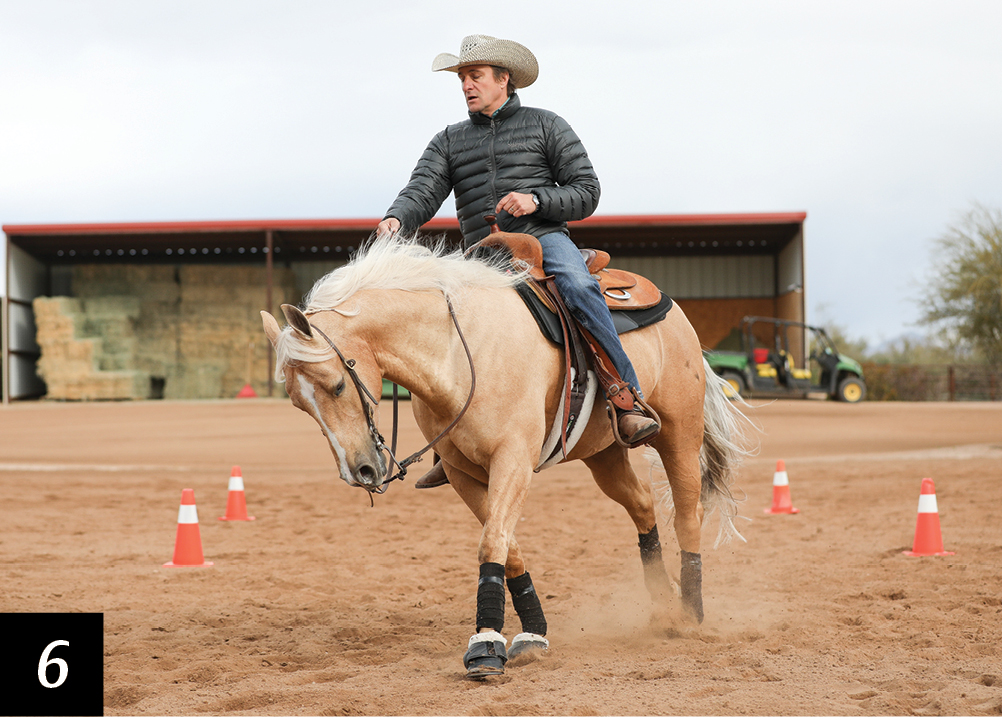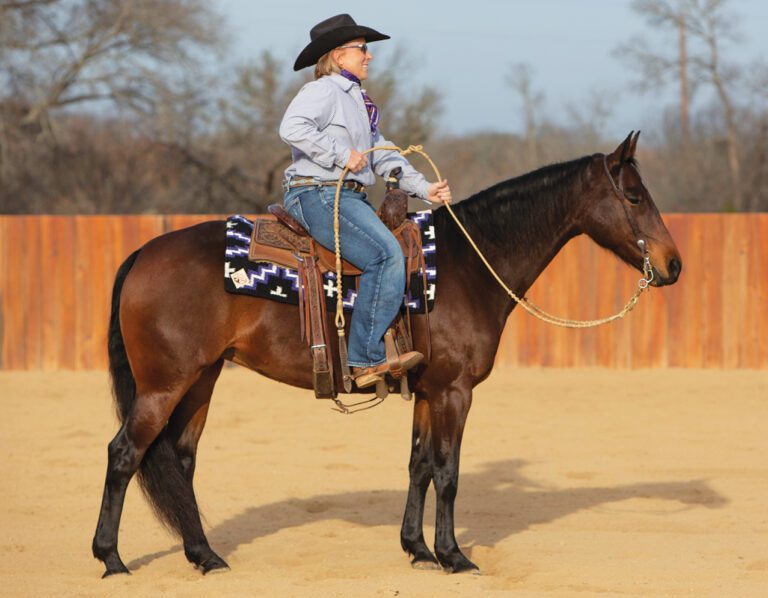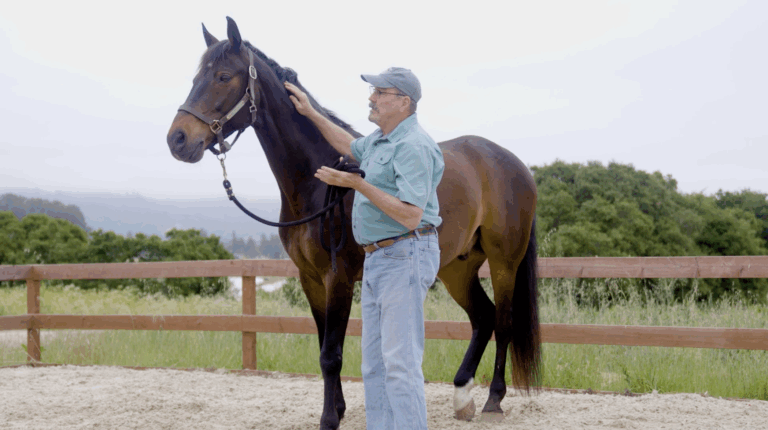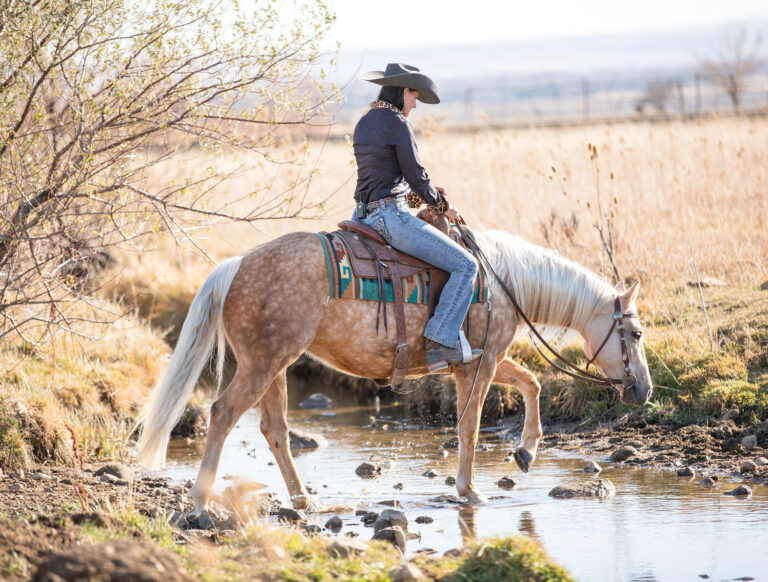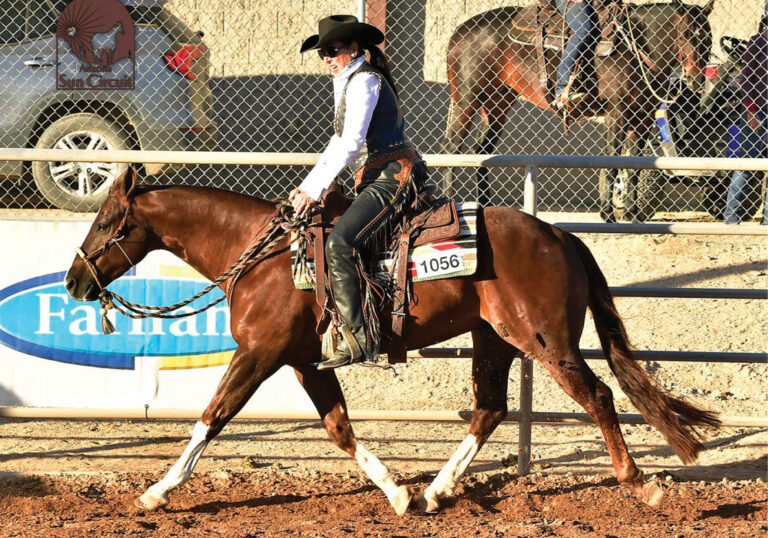I use this drill so my non-pro riders have a visual to help them learn how to change leads in the center of the arena for reining, but it can also help you prepare for any discipline that requires lead changes. If you don’t compete, this drill can allow you to have better control over your horse’s body position and improve your steering during a change.
Start by finding the center of the arena and setting up two cones on either side of the arena edge, similar to where they would be in a reining pattern (the width of the arena). Then find the center of the arena (length-wise) and set up four cones in a rectangle in the middle of the arena. I usually start with my cones 20 feet by 40 feet. As my riders get more comfortable, I make the cones tighter to up the degree of difficulty. The goal is to be able to change leads while you’re in between the four cones—putting you directly in the middle of your arena.
Many riders have a habit of cutting off the end of their circle prior to a change or diving into the next circle directly after a change. These cones will also act as a guide to help you stay straight and avoid having your horse lean one direction or another.
[RELATED: LEAD-CHANGE ANTICIPATION]
One
At a trot, find the center of your arena and work on setting up your lead change. Starting at a trot, or even a walk, ensures that you’ll be able to control all of your horse’s body parts. If you have issues with this at a trot, you’ll struggle with a successful lead change at the lope. Here my rider is setting his horse up for a lead change by using his hand and leg to keep his horse framed up and leading with his right shoulder; his hip slightly to the left.

Two
If your horse isn’t fully moving his shoulder over, go through the cones and exaggerate the shoulder movement a little more. This rider’s left leg is in the correct position to push his horse forward and his shoulder over. Once his horse’s body is in the proper position, he’ll trot around and go through center again and set his horse up for the lead-change cue.
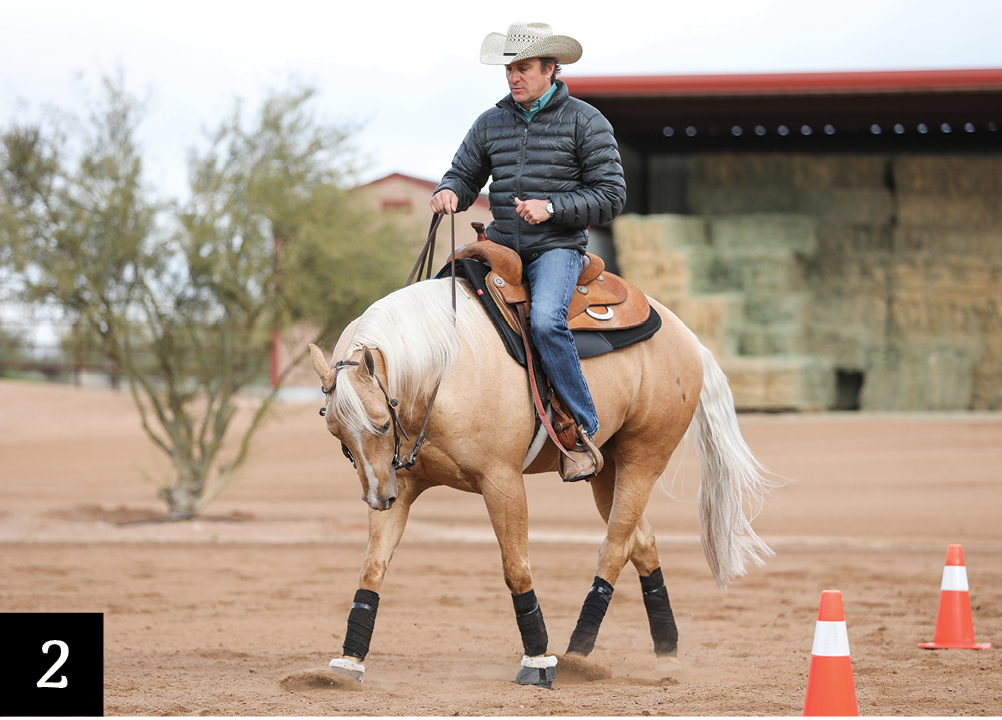
Three
When you can set your horse up for a change at a trot, begin loping and see if you’re able to keep your horse collected through the center. Here my rider is using his hand and leg to collect his horse up and put him into the bridle while maintaining the correct frame—where the horse’s nose and hip are slightly to the right, and the shoulder slightly to the left. If the rider wants to change leads, he’ll need to move his horse’s nose slightly left and shoulder far enough to the right that the hip is slightly left. He’ll eventually ask for the change by releasing the left leg and then applying the right leg.
[RELATED: MOVING OFF YOUR LEG]
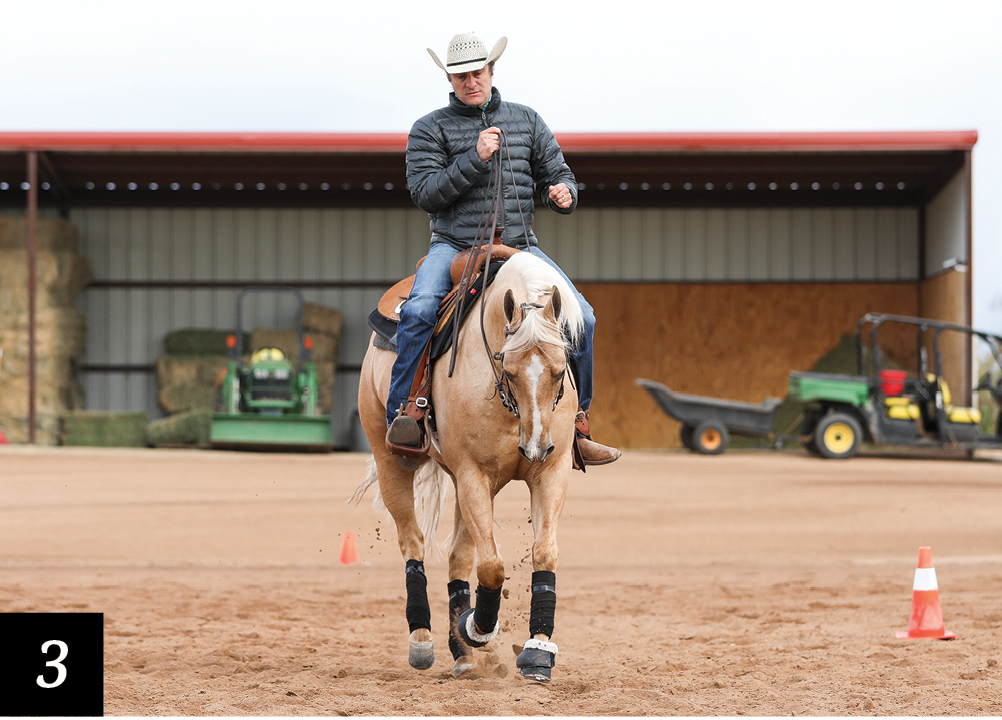
Four
After your horse relaxes in the bridle and wants to move off your leg, it’s time to change leads. Once you’ve changed, keep your eyes forward and your horse straight so he doesn’t automatically dive into the next circle. Here the rider has his horse relaxed, has more weight on the right side of his seat, and his right leg on to help slightly push the hip over, and keep his horse forward and in the bridle. His left leg is away from his horse so he has somewhere to go after the lead change.
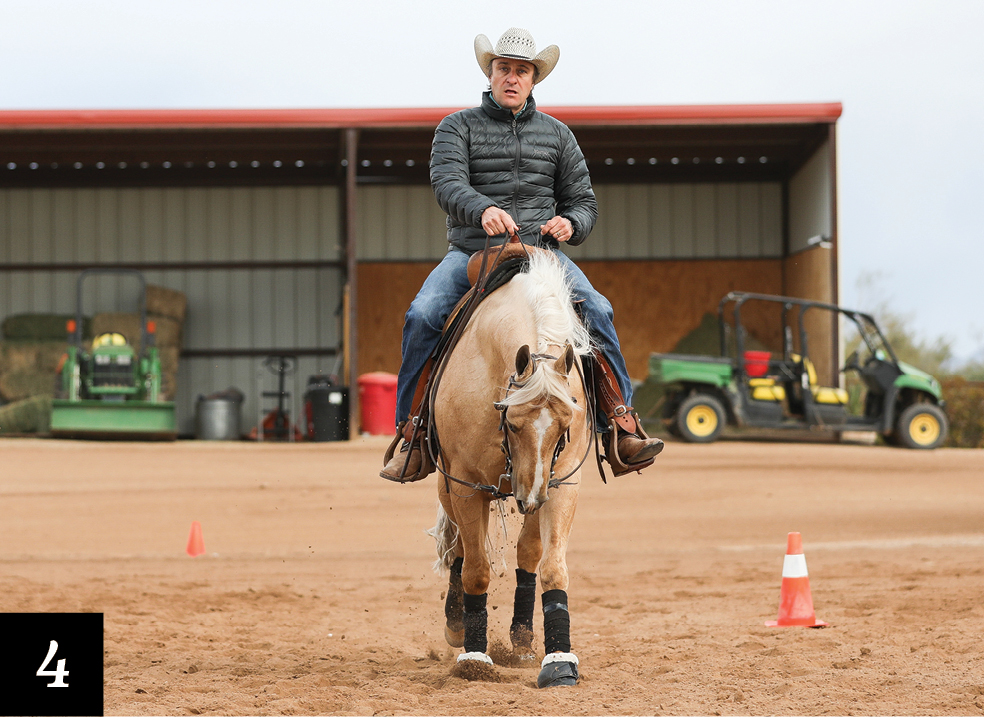
Five
This rider is doing the correct thing as he exits the box in the middle of the arena. You can tell he went two or three strides past the cones before turning to the left, is sitting square in the saddle driving his horse forward, and is looking where he wants to go.
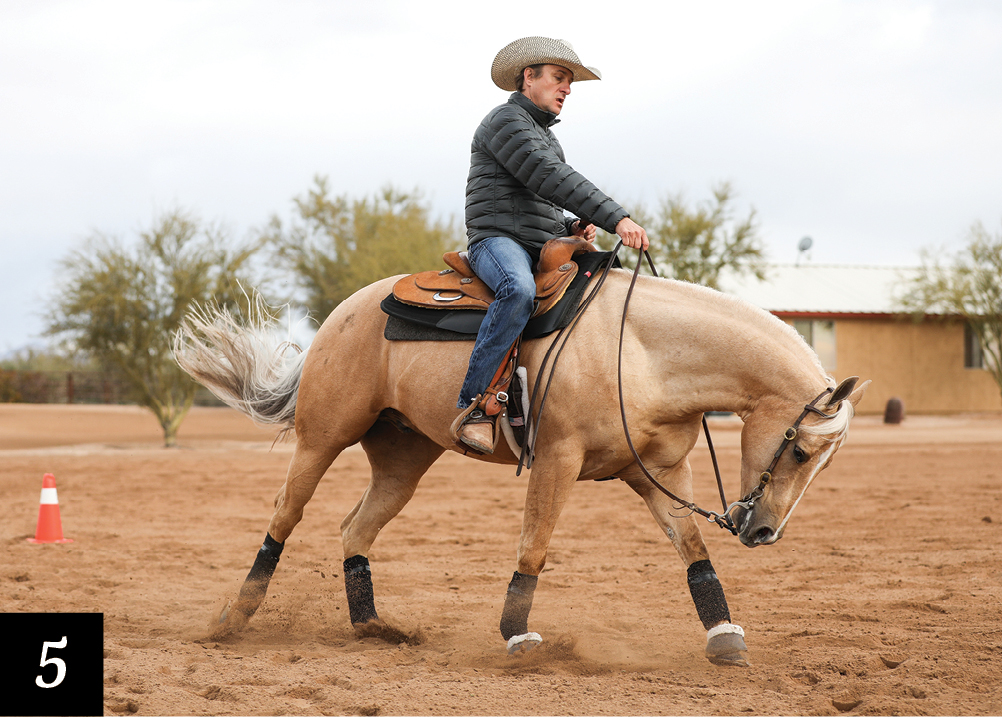
Six
The counter canter is used as a tool to help collection and lead changes. If your horse is wanting to change leads and then immediately drop his shoulder and lean into the circle, take him into a counter canter to help him stand up in his shoulders. Here the rider is sitting square in the saddle and looking where he wants to go. His feet show that he’s using his right leg to move his horse’s hip out. He’ll go through the middle again and set his horse up to change to see if the counter canter was effective. Most horses will go through an anticipation phase before they get solid. These exercises are designed to help horses gain confidence.
[RELATED: FINESSE YOUR LEAD CHANGES]
